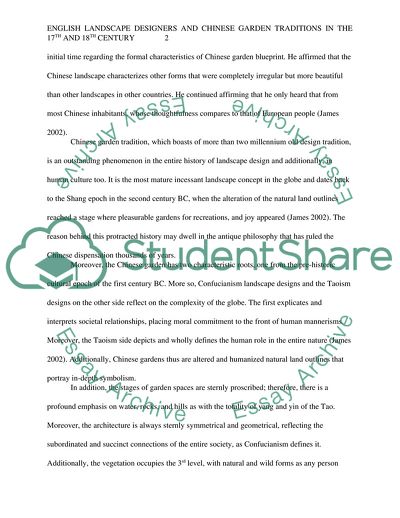Cite this document
(English Landscape Designers and Chinese Garden Design Traditions Coursework Example | Topics and Well Written Essays - 2000 words, n.d.)
English Landscape Designers and Chinese Garden Design Traditions Coursework Example | Topics and Well Written Essays - 2000 words. https://studentshare.org/architecture/1797083-what-did-english-landscape-designers-in-the-late-17th-and-early-18th-century-learn-from-chinese-garden-design-traditions
English Landscape Designers and Chinese Garden Design Traditions Coursework Example | Topics and Well Written Essays - 2000 words. https://studentshare.org/architecture/1797083-what-did-english-landscape-designers-in-the-late-17th-and-early-18th-century-learn-from-chinese-garden-design-traditions
(English Landscape Designers and Chinese Garden Design Traditions Coursework Example | Topics and Well Written Essays - 2000 Words)
English Landscape Designers and Chinese Garden Design Traditions Coursework Example | Topics and Well Written Essays - 2000 Words. https://studentshare.org/architecture/1797083-what-did-english-landscape-designers-in-the-late-17th-and-early-18th-century-learn-from-chinese-garden-design-traditions.
English Landscape Designers and Chinese Garden Design Traditions Coursework Example | Topics and Well Written Essays - 2000 Words. https://studentshare.org/architecture/1797083-what-did-english-landscape-designers-in-the-late-17th-and-early-18th-century-learn-from-chinese-garden-design-traditions.
“English Landscape Designers and Chinese Garden Design Traditions Coursework Example | Topics and Well Written Essays - 2000 Words”. https://studentshare.org/architecture/1797083-what-did-english-landscape-designers-in-the-late-17th-and-early-18th-century-learn-from-chinese-garden-design-traditions.


